Digital Poster
AI-Based Acquisition & Reconstruction: Part IV
ISMRM & ISMRT Annual Meeting & Exhibition • 10-15 May 2025 • Honolulu, Hawai'i

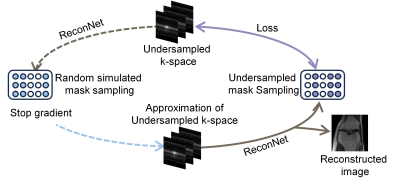 |
Computer Number: 49
2778. Expectation-Maximization
inspired training for End-to-End MRI reconstruction without
fully sampled data
W. Shang, Y. Liu, W. Liu, Z. Zhou, P. Hu
ShanghaiTech University, shanghai, China
Impact: This novel self-supervised training method does
not require splitting the undersampled k-space and enables
end-to-end MRI reconstruction without pre-estimated coil
sensitivity maps. It streamlines self-supervised
reconstruction workflows and paves way for further advances
in self-supervised reconstruction.
|
|
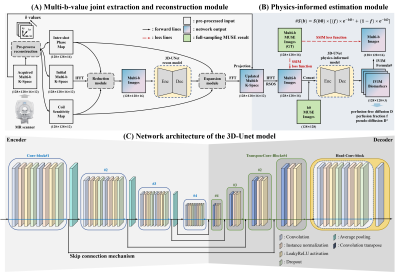 |
Computer Number: 50
2779. Deep
Learning-based Joint Image Reconstruction and Biomarker
Estimation for Highly-accelerated Multi-shot Intravoxel
Incoherent Motion DWI
C. Yuan, S. Chen, L. Liang, X. Xu, H. Xiong, Y. Li, T. Liu,
W. Y. A. Cheung, E. S. Hui, H-C Chang
The Chinese University of Hong Kong, Hong Kong, China
Impact: Our proposed DL-based technique is capable of
precisely reconstructing IVIM-DWI and producing IVIM-related
biomarker maps within a clinically feasible acquisition
time, potentially improving the quantitative evaluation and
analysis of IVIM-DWI-based assessment of cerebrovascular
disease.
|
|
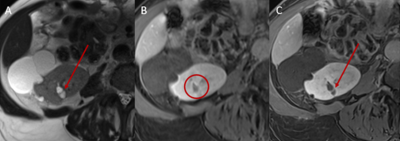 |
Computer Number: 51
2780. Feasibility
of a deep learning-accelerated T1-w Dixon sequence for kidney
MRI
T. Scheef, J. Fingerhut, H. Engel, A. Rau, L. Kolbe, C.
Wilpert, M. Russe, R. Strecker, M. Nickel, F. Bamberg, J.
Weiss, N. Verloh
University Medical Center Freiburg, Freiburg im Breisgau, Germany
Impact: The study demonstrates that deep
learning-accelerated MRI improves image quality and renal
cyst and microstructure detection while reducing scan time.
Can it help detecting more renal lesions than conventional
T1-w sequences? Can it lead to a re-classification of
Bosniak?
|
|
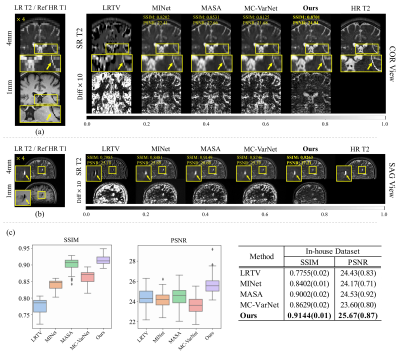 |
Computer Number: 52
2781. SUPREM:
A Super-Resolution Network for Through-Plane Structure
Enhancement in Multi-Contrast MRI Using Disentangled
Representation Learning
Y. Choi, S. Jung, M. Al-masni, D. Kim, D-H Kim
Yonsei University, Seoul, Korea, Republic of
Impact: The
proposed method has the potential to reduce discomfort
during brain MRI assessments by enhancing through-plane
super-resolution, thereby improving structural detail
recovery and supporting more accurate diagnostics in
clinical practice.
|
|
 |
Computer Number: 53
2782. Memory-Efficient
Image Reconstruction using Diffusion Models for Accelerated 3D
Non-Cartesian UTE imaging
J. Petersen, D. Grodzki, T. Küstner, S. Sommer
Medical Image and Data Analysis (MIDAS.lab), Department of Diagnostic and Interventional Radiology, University of Tübingen, Tübingen, Germany
Impact: We propose a memory-efficient diffusion model
for reconstructing accelerated 3D radial UTE acquisitions,
enabling high-quality, and reliable reconstructions while
reducing the reconstruction time of common deep-learning
methods. The model generalizes well across body parts,
supporting various applications and acceleration factors.
|
|
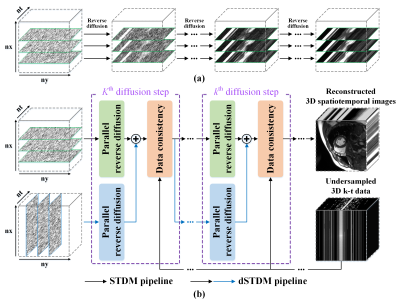 |
Computer Number: 54
2783. Robust
Cardiac Cine MRI Reconstruction with Spatiotemporal Diffusion
Model
Z. Wang, J. Huang, C. Wang, G. Yang, X. Qu
Xiamen University, Xiamen, China
Impact: Given the amazing robustness and
generalizability, we believe that our spatiotemporal
diffusion model can be an important framework for cardiac
cine MRI. Furthermore, this spatiotemporal diffusion
approach can be extended to inverse problems in other
medical modalities involving dynamic acquisitions.
|
|
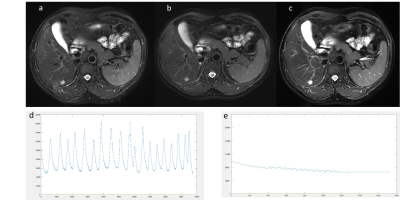 |
Computer Number: 55
2784. Accelerated
T2WI for Liver MRI with Deep Learning Reconstruction: A
Prospective Comparison on Image Quality and Respiration Factors
Y. Yang, C. Hu, H. Li, Q. Liu, R. Tang, X. Song, Z. Li
Tongji Hospital, Tongji Medical College, Huazhong University of Science and Technology, Wuhan, China
Impact: Respiratory-gating and breath-hold DL-T2WI
sequences can be used in daily practice as standard
sequences, and parameters derived from the breathing curve
can aid in developing a personalized workflow for the
imaging process.
|
|
 |
Computer Number: 56
2785. Learned
K-Space Partitioning for Improved Dual-Domain Self-Supervised
Image Reconstruction
B. Kadota, C. Millard, M. Chiew
Sunnybrook Research Institute, Toronto, Canada
Impact: Learned k-space partitioning enhances
reconstruction quality better utilizing acquired data for
reconstructions. Learned k-space partitioning provides a
framework for optimizing self-supervised partitioning to
diverse k-space trajectories which previously were
hand-picked or sub-optimal.
|
|
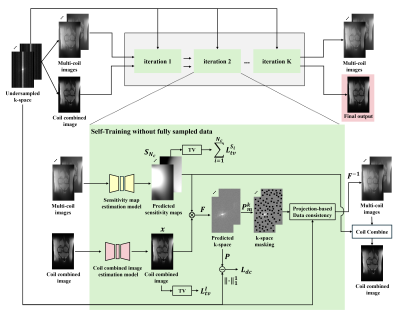 |
Computer Number: 57
2786. KOMET:
Kspace Optimal Masking for Efficient Training of Zero-shot MRI
Reconstruction
H. Kim, J. Joo, D. Lee, D. Hwang, T. Eo
Yonsei University, Seoul, Korea, Republic of
Impact: KOMET establishes a novel framework for stable
zero-shot MRI reconstruction by adapting masked modeling to
k-space domain. This advancement enables robust acceleration
without fully sampled reference data, paving the way for
broader clinical application of accelerated MRI.
|
|
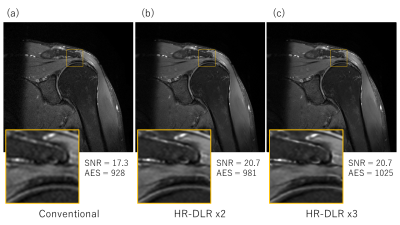 |
Computer Number: 58
2787. High-Resolution
Deep Learning Reconstruction (HR-DLR) with Compressed Sensing
for a Highly Accelerated Acquisition
H. Kutsuna, M. Bekku, K. Shinoda
Canon Medical Systems Corporation, Tochigi, Japan
Impact: High-Resolution Deep Learning Reconstruction
(HR-DLR) re-defined the trade-off between scan time, image
SNR and sharpness that previously limited Compressed Sensing
(CS) acceleration. Combination of HR-DLR and CS makes yet
higher acceleration practical, benefiting throughput and
patient comfort.
|
|
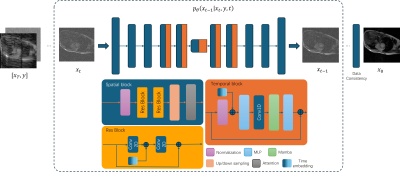 |
Computer Number: 59
2788. Generative
Diffusion Model for Dynamic MRI Reconstruction with Temproal
State Space Representation
Z. Zhang, C. Qin
Imperial College London, London, United Kingdom
Impact: Our work will enable faster and higher-quality
dynamic CMR imaging for improving the MR imaging workflow
and aiding in clinical diagnosis.
|
|
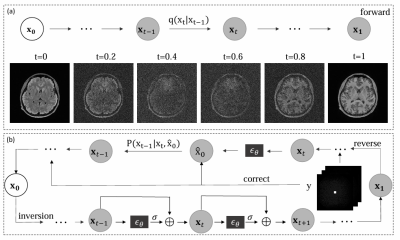 |
Computer Number: 60
2789. Guided
MRI Reconstruction via Schrödinger Bridge
Y. Wang, T. Zhou, J. Xie, Z. cui, B. huang, H. Zheng, Y.
Zhou, H. Wang, D. Liang, Y. Zhu
Shenzhen Institute of Advanced Technology,Chinese Academy of Sciences, Shenzhen, China
Impact: A novel approach combines structural similarity
modeling with difference compensation, introducing image
editing techniques to MRI reconstruction. This paves the way
for integrating MRI-guided reconstruction and image editing
methods.
|
|
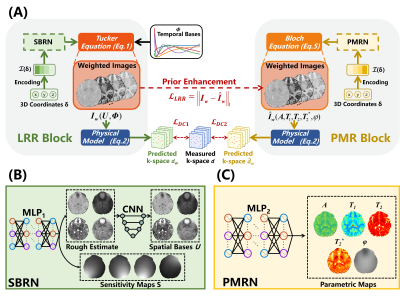 |
Computer Number: 61
2790. Low-Rank
Representation Enhanced Implicit Neural Representation for
Zero-Shot Reconstruction in Highly Accelerated 3D
Multi-parametric MRI
H. Zhang, G. Lao, H. Wei
Shanghai Jiao Tong University, Shanghai, China
Impact: The proposed framework could reconstruct
whole-brain T1, T2, T2* maps within just a 2.5-minute scan.
This advancement holds clinical promise for tissue
characterization and pathological assessment in
neuroscience, and enables probability for higher resolution
and additional contrasts in MRI sequences.
|
|
 |
Computer Number: 62
2791. Simultaneous
CT-MR imaging using sparse X-ray projections
O. Pastor-Serrano, L. Xing
Stanford University , Stanford, United States
Impact: The proposed framework enables efficient,
low-dose imaging with exceptional tissue contrast, which
could transform fields like radiation therapy by reducing
scan requirements without sacrificing image quality. This
can potentially enable treatment guidance (MR) with
simultaneous dose calculation (CT).
|
|
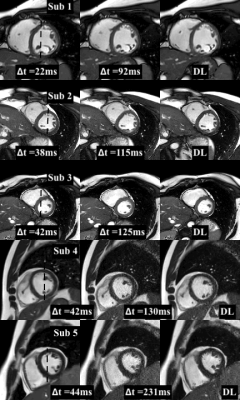 |
Computer Number: 63
2792. A
deep learning model to enhance temporal information for the
cardiac cine imaging
T. C. Chao, J. Browne, S. Waddle, D. Wang, T. Leiner
Mayo Clinic, Rochester, United States
Impact: The proposed deep-learning based temporal
interpolation for the cine CMR is independent of and
compatible with existing acceleration strategies such as
SENSE, Compressed Sensing and GRAPPA allowing a further
increase in acceleration rate without the need for the raw
data.
|
|
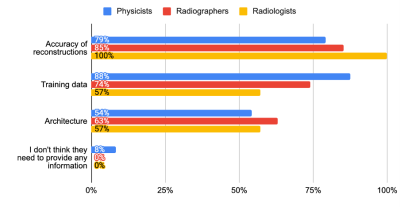 |
Computer Number: 64
2793. Clinical
AI-based MR Image Reconstruction: UK National Stakeholder
Engagement
A. Peplinski, D. Adams, M. Miquel, P. Martin
Barts Health NHS Trust, London, United Kingdom
Impact: Coherent approaches for implementation of the
software can be achieved after understanding how different
sites have rolled out the software, what worked well
alongside the challenges. Recommendations can be provided
for how to inform patients of the use of AI.
|
The International Society for Magnetic Resonance in Medicine is accredited by the Accreditation Council for Continuing Medical Education to provide continuing medical education for physicians.